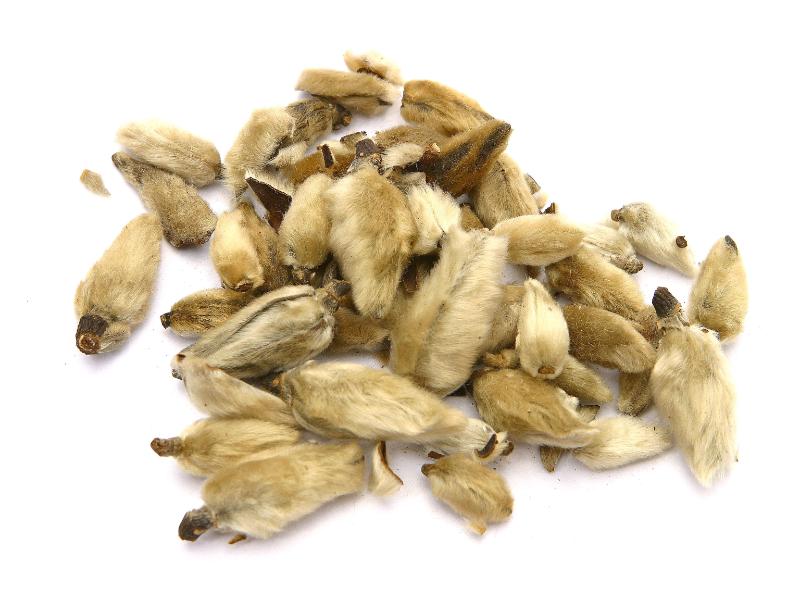Search in medicinals
Magnoliae Flos
Magnolia flower1
辛夷 〔辛夷〕 xīn yí

Alternate Chinese names: 毛辛夷 máo xīn yí; 辛夷桃 xīn yí táo; 木笔花 mù bǐ huā; 木笔 mù bǐ; 辛荑 xīn yí; 辛夷花 xīn yí; 春花 chūn huā
Kingdom: Plant
Origin in PRC Pharmacopoeia: Magnolia biondii Pamp.; Magnolia denudata Desr.; Magnolia sprengeri Pamp. (PRC Pharmacopoeia)
Origin in unofficial sources: Magnolia liliflora Desr.; Magnolia denudata Desr.*; Magnolia fargesii Cheng; Magnolia campbellii Hook. f. et Thoms.; Magnolia biondii Pamp.*; Magnolia springeri Pamp.*
Use: Medicinal
Category: Exterior-resolving agents / Warm acrid exterior-resolving agents
Properties: Acrid; warm.
Channel entry: Lung and stomach channels.
Actions and indications:
- Disperses wind-cold: External contraction of wind-cold, with headache and nasal congestion.
- Frees the nasal orifices: Deep-source nasal congestion.
Dosage and method: Oral: 3–9 g in decoctions. This product is covered with hairs that irritate the throat, so it is wrapped in a cloth bag when used in decoctions. It should be lightly crushed before use.
Warnings: Contraindicated in yīn vacuity with effulgent fire.
Product description: Attached to a short woody twig, the dried buds are ovate in shape, like the end of an artist's paint brush. They are 1–4 cm long, and 0.7–2 cm in diameter. The outer layer comprises 2 bracts in 2 layers, whose outer surface is covered with soft, long whitish brown hairs 5 mm in length, and whose inner surface is brown and smooth. The bracts can be removed to reveal 3 calyces, and 6–12 tightly wrapped brown petals, amidst which are numerous brownish yellow stamens and a brown pistil. The buds are brittle and break easily.
Quality: Best are dry unopened buds that are green in color and have no stalks.
Production area: Hénán, Sìchuān, ānhuī, Shǎnxī (Shaanxi), and Húběi.
Etymology: The name xīn yí 辛夷 is interpreted as the homophone 辛荑, acrid bud,
reflecting both the choice of immature flower and its acrid quality.